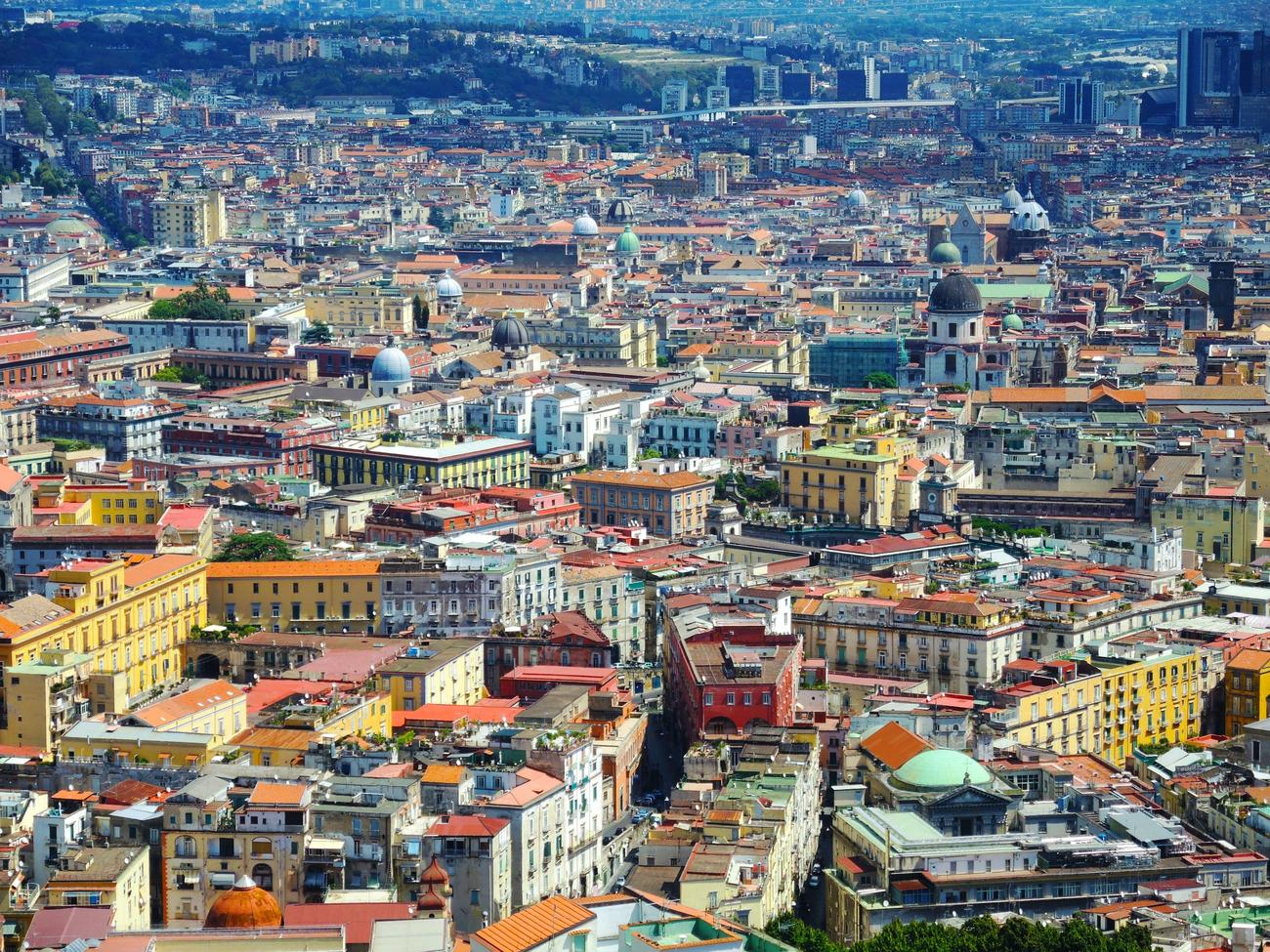When it comes to Italy, one cannot help but marvel at the rich tapestry of culture, history, and culinary delights that this vibrant country has to offer. And nestled in the southern region of Campania lies a city that epitomizes the very essence of Italy’s significance – Naples. With its magnificent historical landmarks, awe-inspiring artistic heritage, and mouthwatering gastronomic treasures, Naples unravels a captivating tale of why it holds a special place in the heart of Italy. As a seasoned travel writer intimately acquainted with the diverse regions of Italy, I am thrilled to delve into the myriad reasons behind Naples’ enduring cultural, historical, and culinary significance in this exploration of Naples: Unraveling Italy’s Cultural, Historical, and Culinary Significance.

Why is Naples important to Italy?
Naples, a city nestled on the southern coast of Italy, holds a special place in the nation’s cultural, historical, and culinary landscape. Its significance goes beyond just being the birthplace of pizza or having Mount Vesuvius as a backdrop. Naples is a true gem that showcases Italy’s rich heritage and the contributions it has made to the world. Let’s delve into why this vibrant city is so important and why it should be on every traveler’s bucket list.
Unraveling Naples’ Cultural Tapestry:
When we talk about the cultural wealth of Italy, Naples undoubtedly takes a prominent position. This city has a history that dates back to the Magna Graecia era, when it was a thriving Greek colony. The remnants of this ancient civilization can still be found in the city’s architecture, its archaeological sites, and its unique traditions. By exploring Naples, you can literally walk in the footsteps of ancient civilizations and get a glimpse into the foundations on which modern Italy stands.
The historic center of Naples, a UNESCO World Heritage Site, is a testament to the city’s cultural significance. It is a hub of medieval churches, catacombs, Roman walls, and Renaissance palaces that have stood the test of time. Each step you take within these ancient streets leads to a discovery of awe-inspiring historical landmarks, artistic masterpieces, and a profound appreciation for the city’s rich cultural tapestry.
“Naples is a living museum, where the golden threads of history are woven into the fabric of daily life.”
Naples as an Artistic Haven:
Italy has long been revered for its contributions to the arts, and Naples holds a special place in this realm. The city has been a muse for countless artists and has nurtured talent that has left an indelible mark on the world of art. From Caravaggio’s brooding masterpieces to Titian’s vibrant canvases, Naples has inspired and continues to inspire generations of artists.
Walking through the city, you’ll encounter an abundance of artistic gems. The Naples National Archaeological Museum houses an impressive collection of artifacts, including ancient Greek and Roman sculptures. The Capodimonte Museum showcases Renaissance and Baroque art, with masterpieces from renowned artists like Raphael, Botticelli, and Titian. Art is not just confined to galleries here; it spills onto the streets, where vibrant street art adorns the walls, breathing life into the city’s vibrant cultural scene.
“In Naples, art is not just a pastime; it is the very essence that permeates every corner of the city.”
Indulging in Naples’ Culinary Delights:
What better way to understand the importance of a city than through its food? Naples is synonymous with gastronomic delights, and it holds the prestigious title of being the birthplace of pizza. This iconic dish, with its thin and crispy crust, topped with tangy tomato sauce and creamy mozzarella, has traveled the world and captured the hearts of food lovers everywhere. But there’s more to Naples’ culinary scene than just pizza.
From street food like arancini and sfogliatelle, to traditional dishes like spaghetti alle vongole and parmigiana di melanzane, Naples has a culinary repertoire that will leave you salivating. The city is home to bustling food markets like Mercato di Porta Nolana, where you can immerse yourself in the vibrant flavors and aromas of fresh local produce, regional delicacies, and an array of seafood caught from the nearby Bay of Naples. In Naples, food is not just sustenance; it is a celebration of life, love, and the joy of sharing a meal with family and friends.
“Naples’ culinary heritage goes beyond food; it is a reflection of the city’s passion for life and its ability to embrace simplicity and authenticity.”
The Essence of Naples:
Naples is a city unlike any other. Its historical, artistic, and gastronomic heritage make it an invaluable piece of Italy’s cultural puzzle. Just as a puzzle is incomplete without its missing pieces, Italy as a nation would be incomplete without Naples. It is a city that holds countless stories, whispered through its cobblestone streets and illustrated through its vibrant celebrations.
Naples has played a significant role in shaping Italy’s identity, and its star continues to shine brightly on the world stage. Whether you’re a history buff, an art enthusiast, or a food lover, Naples has something to offer everyone. So, pack your bags, embrace the rhythm of this vibrant city, and get ready to uncover the true essence of Naples, a place where cultural, historical, and culinary discoveries await at every turn.
“Naples, the beating heart of Italy, where history, art, and food intertwine to create an experience that transcends time.”
Naples, Italy is a city that will captivate you with its charm and rich history. If you’re curious about the fascinating and fun facts about Naples Italy, click here to uncover them all. Discover intriguing insights about this mesmerizing city and its vibrant culture. From mouth-watering cuisine to stunning architecture, Naples has something to offer to everyone. Don’t miss out on these fun facts that will leave you wanting to pack your bags and explore this enchanting destination. So, click here to delve into the fun facts about Naples Italy and get ready to be amazed by its wonders: fun facts about Naples Italy.
that the South was a lawless land controlled by ruthless criminals. This reputation only further solidified the divide between the North and the South.
[youtube v=”L65KVjfOFeM”]
As time went on, these organized crime groups, such as the Camorra and the Sicilian Mafia, grew more powerful and entrenched themselves in various aspects of Southern Italian society. They controlled businesses, politicians, and even influenced the daily lives of ordinary people. This further perpetuated the inequality and despair that plagued the region.
But why did these criminal organizations thrive in the South while the North seemed to be relatively free from their grip? The answer lies in the socio-economic conditions of the two regions. The North, with its thriving industries, infrastructure, and higher quality of education, provided opportunities for its citizens to pursue legitimate careers and fend off the influence of criminal activities. The South, on the other hand, lacked such opportunities and was plagued by poverty, limited access to education, and a dearth of jobs. This created an environment where organized crime could flourish, offering desperate individuals an alternative means of survival.
Furthermore, the government’s neglect of the South only exacerbated the situation. Funds and resources that should have been allocated to uplift the region were often mismanaged or redirected elsewhere. This led to a cycle of poverty and despair that seemed impossible to break.
Today, the South of Italy still grapples with the consequences of this deep-rooted inequality. High unemployment rates, limited economic opportunities, and a lack of investment continue to hinder the region’s progress. The divide between the North and the South persists, with the South lagging far behind in terms of economic development and quality of life.
It is important to note that not all of Southern Italy is plagued by poverty and organized crime. There are pockets of prosperity and individuals who are working hard to improve their communities. However, the overarching divide remains a pressing issue that requires attention and action from those in power.
In conclusion, the stark contrast between the North and the South of Italy is undeniable. The North enjoys prosperity, economic growth, and a higher standard of living, while the South grapples with poverty, unemployment, and organized crime. This divide has historical roots, stemming from political and socio-economic factors that have perpetuated inequality and despair in the region. It is a complex issue that requires comprehensive solutions and a commitment from those in power to address the underlying problems. Until then, the South of Italy will continue to struggle, and the divide between the North and the South will persist.

FAQ
Question 1: What is Naples known for?
Answer: Naples is known for several reasons. Firstly, it is the birthplace of pizza, making it an iconic destination for food lovers. Secondly, the cityscape of Naples is instantly recognizable, with the majestic Mount Vesuvius serving as a backdrop. Finally, Naples has a rich cultural history, dating back to the Magna Graecia era, and is home to numerous historical landmarks and artistic treasures.
Question 2: Is the historic center of Naples recognized for its cultural significance?
Answer: Yes, the historic center of Naples holds immense cultural importance and has been designated as a UNESCO World Heritage Site. This area features a remarkable blend of architectural styles from different periods, including medieval churches, Roman walls, Renaissance palaces, and catacombs. Exploring the historic center of Naples is like stepping back in time and witnessing the city’s fascinating evolution.
Question 3: What famous artworks can be found in Naples?
Answer: Naples has a wealth of artistic masterpieces waiting to be discovered. It is home to works by renowned artists such as Caravaggio and Titian. The city’s museums and galleries showcase a diverse range of art, allowing visitors to appreciate the rich cultural heritage of Naples. Art enthusiasts will be captivated by the stunning collection of paintings, sculptures, and artifacts found throughout the city.
Question 4: Can you recommend any reliable sources for further information about Naples?
Answer: Certainly! For more in-depth information about Naples, you can consult reputable sources such as heyexplorer.com, thetravel.com, theroadreel.com, urbanabroad.com, and nationalgeographic.com. These sources provide valuable insights into the history, culture, and attractions of Naples, allowing readers to delve deeper into the city’s significance within Italy.
Question 5: How does Naples contribute to Italy’s cultural, historical, and culinary landscape?
Answer: Naples plays a vital role in shaping Italy’s cultural, historical, and culinary landscape. Its rich cultural history, from the Magna Graecia era to the Renaissance, has given rise to a unique blend of architectural treasures and artistic masterpieces. Additionally, the city’s status as the birthplace of pizza has not only made it a global food destination but has also contributed to Italy’s international culinary fame. Naples’ multifaceted contributions make it a city of unparalleled significance within the country.
- Unlocking Francis Alexander Shields’ Finance Empire: A Comprehensive Biography - July 12, 2025
- Unveiling Francis Alexander Shields: A Business Legacy - July 12, 2025
- Francis Alexander Shields’ Business Career: A Comprehensive Overview - July 12, 2025















